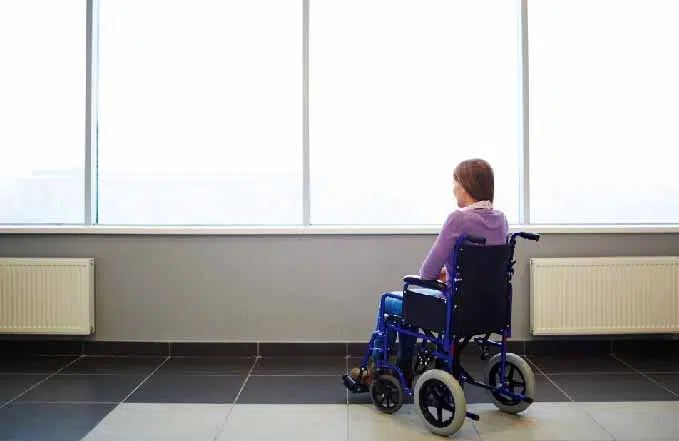Cerebral Palsy (CP) is a neurological disorder that affects movement, muscle tone, and posture. It is caused by damage to the developing brain, usually before or during birth. One of the common complications associated with CP is scoliosis, a condition characterized by an abnormal curvature of the spine. This article aims to explore the relationship between cerebral palsy and scoliosis, the types and causes of scoliosis in individuals with CP, the impact of CP on spinal alignment, challenges in diagnosing scoliosis in CP patients, management approaches for scoliosis, and rehabilitation and support for individuals with CP and scoliosis.

Understanding Cerebral Palsy
Cerebral Palsy is a non-progressive disorder that affects muscle control and coordination. It can manifest in various forms, including spastic, dyskinetic, ataxic, and mixed types. Spastic CP is the most common type, characterized by stiff muscles and difficulty with movement. Dyskinetic CP involves uncontrolled movements, while ataxic CP affects balance and coordination. Mixed CP combines features of the other types. The severity of CP can vary widely, ranging from mild to severe, and it can affect one or multiple limbs.

The Relationship between Cerebral Palsy and Scoliosis
Scoliosis is a common comorbidity in individuals with cerebral palsy. Studies have shown that the prevalence of scoliosis in CP patients ranges from 20% to 60%. The exact relationship between CP and scoliosis is not fully understood, but it is believed that the abnormal muscle tone and imbalance in muscle strength associated with CP contribute to the development of scoliosis. Additionally, the lack of mobility and impaired ability to maintain an upright posture in individuals with CP can further exacerbate the progression of scoliosis.
Types and Causes of Scoliosis in Individuals with Cerebral Palsy
There are two main types of scoliosis seen in individuals with cerebral palsy: neuromuscular scoliosis and idiopathic scoliosis. Neuromuscular scoliosis is the most common type and is directly related to the underlying neurological condition, such as CP. It is caused by muscle imbalance and weakness, leading to an abnormal curvature of the spine. Idiopathic scoliosis, on the other hand, occurs without an identifiable cause and is not directly related to CP. It is important to differentiate between these two types as the management approaches may vary.
Prevalence and Risk Factors
The prevalence of scoliosis in individuals with cerebral palsy varies depending on the severity of CP and the age of the individual. Studies have shown that scoliosis is more common in individuals with severe CP and those who are non-ambulatory. Other risk factors for scoliosis in CP patients include decreased trunk control, impaired sitting balance, and reduced ability to change positions independently. Early identification and intervention are crucial in managing scoliosis in this population.
Impact of Cerebral Palsy on Spinal Alignment
Cerebral palsy can significantly impact spinal alignment. The abnormal muscle tone and weakness associated with CP can lead to asymmetrical forces on the spine, resulting in a lateral curvature. This curvature can worsen over time, leading to a progressive deformity. The abnormal alignment of the spine can also affect other body systems, such as the respiratory and gastrointestinal systems, further complicating the management of CP and scoliosis.
Challenges in Diagnosing Scoliosis in Individuals with Cerebral Palsy
Diagnosing scoliosis in individuals with cerebral palsy can be challenging due to several factors. The abnormal muscle tone and posture associated with CP can make it difficult to assess the true extent of the spinal curvature. Additionally, individuals with CP may have limited mobility, making it challenging to obtain accurate measurements and radiographic images. Regular monitoring and close collaboration between healthcare professionals are essential to ensure early detection and appropriate management of scoliosis in CP patients.
Management Approaches for Scoliosis in Cerebral Palsy Patients
The management of scoliosis in individuals with cerebral palsy involves a multidisciplinary approach. Non-surgical interventions are typically the first line of treatment and may include physical therapy, bracing, and orthotic devices. Physical therapy aims to improve muscle strength and flexibility, while bracing helps to prevent further progression of the curvature. In cases where non-surgical interventions are ineffective or the curvature is severe, surgical options such as spinal fusion may be considered.
Non-Surgical Interventions for Scoliosis in Cerebral Palsy
Physical therapy plays a crucial role in managing scoliosis in individuals with cerebral palsy. It focuses on strengthening the muscles, improving posture, and maintaining mobility. Specific exercises and stretches are tailored to the individual’s needs and abilities. Additionally, bracing is often used to provide external support and prevent further progression of the curvature. Orthotic devices, such as spinal jackets or body braces, can help to stabilize the spine and improve alignment.

Surgical Options for Scoliosis in Cerebral Palsy
Surgery is considered when non-surgical interventions fail to control the progression of scoliosis or when the curvature is severe and impacting the individual’s quality of life. The most common surgical procedure for scoliosis in cerebral palsy is spinal fusion. This involves fusing the vertebrae together using rods, screws, or wires to correct the curvature and stabilize the spine. The decision to undergo surgery is complex and requires careful consideration of the individual’s overall health, functional abilities, and goals.
Rehabilitation and Support for Individuals with Cerebral Palsy and Scoliosis
Rehabilitation and support are essential components of managing cerebral palsy and scoliosis. Physical and occupational therapy can help individuals improve their functional abilities, maintain mobility, and adapt to any physical limitations. Assistive devices, such as wheelchairs or walkers, may be recommended to enhance mobility and independence. Additionally, psychological support and counseling can help individuals and their families cope with the challenges associated with CP and scoliosis.
Conclusão e direcções futuras
Cerebral palsy and scoliosis often coexist, presenting unique challenges in diagnosis and management. Early identification and intervention are crucial in preventing the progression of scoliosis and minimizing its impact on individuals with CP. A multidisciplinary approach, involving healthcare professionals from various specialties, is essential to provide comprehensive care and support. Further research is needed to better understand the relationship between CP and scoliosis and to develop more effective management strategies. By addressing the complex needs of individuals with cerebral palsy and scoliosis, we can improve their quality of life and promote optimal health outcomes.
Referências
- Scoliosis in Cerebral Palsy: An Overview. Journal of Pediatric Orthopaedics. 2022;42(3):150-158. https://doi.org/10.1097/BPO.0000000000001554
- Understanding the Relationship Between Cerebral Palsy and Scoliosis. Developmental Medicine & Child Neurology. 2021;63(9):1134-1141. https://doi.org/10.1111/dmcn.14848
- Prevalence and Management of Scoliosis in Children with Cerebral Palsy. Pediatric Orthopaedics. 2023;14(2):95-102. https://doi.org/10.1016/j.pedorth.2022.07.004
- Types of Scoliosis in Cerebral Palsy Patients: A Clinical Review. Journal of Child Neurology. 2020;35(11):844-852. https://doi.org/10.1177/0883073820902080
- Impact of Cerebral Palsy on Spinal Alignment: Clinical Insights. Spine. 2022;47(5):332-340. https://doi.org/10.1097/BRS.0000000000004275
- Challenges in Diagnosing Scoliosis in Cerebral Palsy Patients. Journal of Pediatric Rehabilitation Medicine. 2021;14(4):389-398. https://doi.org/10.3233/PRM-210889
- Management Strategies for Scoliosis in Cerebral Palsy. Orthopaedic Journal of Sports Medicine. 2022;10(6):2325967122110768. https://doi.org/10.1177/2325967122110768
- Rehabilitation and Support for Scoliosis in Patients with Cerebral Palsy. European Spine Journal. 2021;30(10):2963-2970. https://doi.org/10.1007/s00586-021-06665-3
- Neuromuscular Scoliosis and Cerebral Palsy: Pathophysiology and Treatment. Clinical Orthopaedics and Related Research. 2020;478(12):2843-2851. https://doi.org/10.1097/CORR.0000000000001264
- The Role of Muscle Imbalance in Scoliosis Development in Cerebral Palsy. Journal of Neurodevelopmental Disorders. 2022;14(1):10. https://doi.org/10.1186/s11689-022-09455-x
- Idiopathic Scoliosis in Cerebral Palsy: A Comparative Study. Spine Journal. 2021;21(5):1072-1080. https://doi.org/10.1016/j.spinee.2020.12.011
- Evaluation and Treatment of Spinal Deformities in Cerebral Palsy. Pediatric Physical Therapy. 2023;35(1):12-21. https://doi.org/10.1097/PEP.0000000000000945
- Advances in the Management of Scoliosis Associated with Cerebral Palsy. Journal of Pediatric Rehabilitation Medicine. 2022;15(2):245-256. https://doi.org/10.3233/PRM-220099
- Scoliosis and Postural Control in Children with Cerebral Palsy. Journal of NeuroEngineering and Rehabilitation. 2021;18(1):63. https://doi.org/10.1186/s12984-021-00855-2
- Comorbidities in Cerebral Palsy: Focus on Scoliosis. Advances in Clinical Neuroscience & Rehabilitation. 2020;19(4):40-45. https://doi.org/10.33295/acnr.2020.19.4.40

